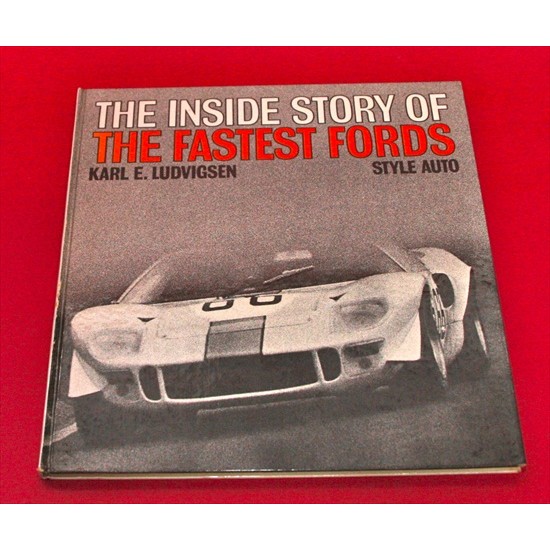
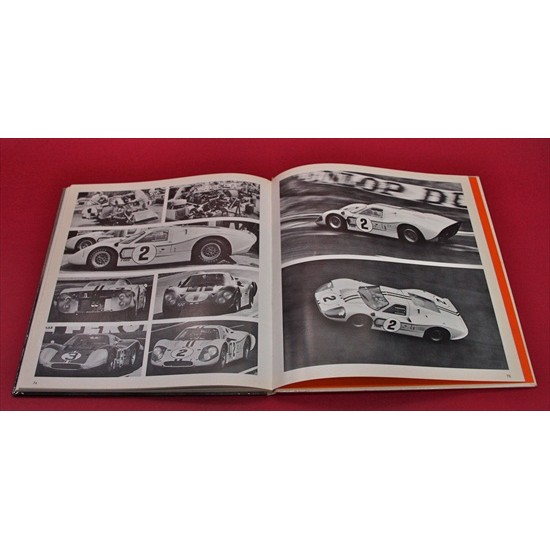
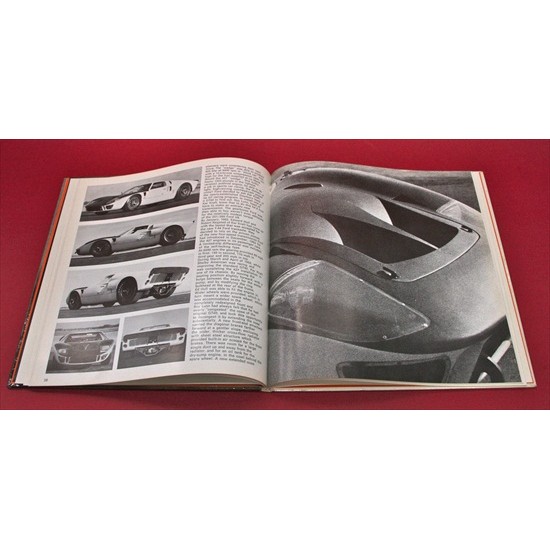
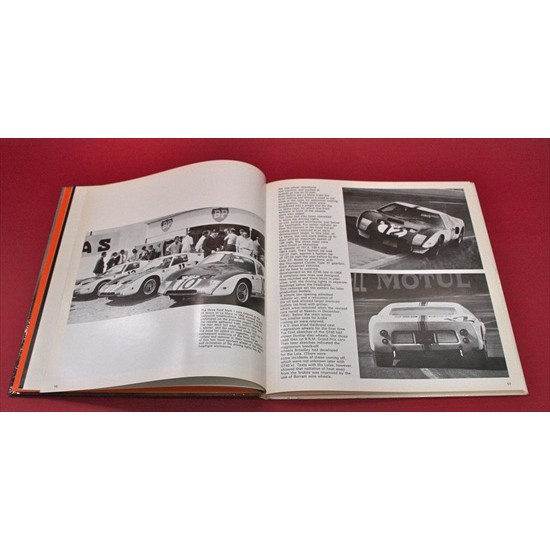
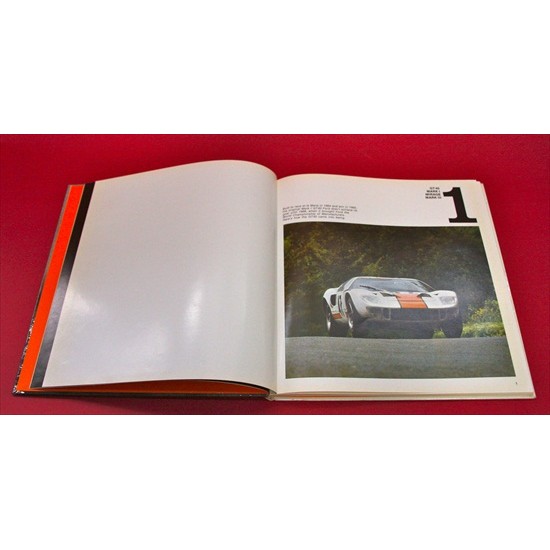





- Stock: In Stock
- Author: Karl Ludvigsen
- ISBN: None
- Publisher: Style Auto Editrice
- Publication Year: 1971
- Edition: 1st Edition
- Revised: No
- Reprint: Yes
- Language: English
- Pages: 80
- Illustrations: Colour and Black and White
- Format: Hardback - Published Without Dustjacket
- Condition Book: Good
- Dimensions: 260.00mm x 245.00mm
- Location: TW
The first Ford ever to race at Le Mans was built in Britain. It was a rakish machine, a roadster, an abbreviated version of the 10 h.p. Ford De Luxe driven in 1937 to a 14th place finish by M. K. H. Bilney and Miss J. Richmond. That, until 1966, was to remain the only achievement by a Ford car at Le Mans, the world's best-known endurance race for sports cars. Ford started late, but it travelled fast. Its achievement of providing the race winner four years in a row from 1966 through 1969 catapulted it into the front ranks of the titans of Le Mans. And those ranks were already occupied by some respected racing names. When the Le Mans race was still young it had been dominated by Bentley, with five wins in all and a string of four in a row starting in 1927. Immediately afterwards, Alfa Romeo took up the tradition with a series of four wins ending with the 1934 race. After the War Jaguar matched Bentley with five victories in the French 24-hour race, its longest sequence of wins being a triple beginning in 1955. In spite of wins in 1949 and 1954, Ferrari wasn't taken seriously in those days. Aces like Ascari and Castellotti were fast at the start in the red cars but were seldom around at the finish. Phil Hill changed the image with his 1958 win. Then in 1960 Ferrari forged the first link in the longest chain of victories any car maker has ever made at Le Mans, six in a row. Was Ferrari a formidable opponent when Ford came on the scene? Of course it was. Ferrari was so formidable that Ford negotiated seriously in 1963 to buy Ferrari rather than have to try to beat him. Failing in that, Ford decided to build its own Le Mans winner. The job took much longer, and proved far more difficult and costly, than anyone could have dreamed at the outset. This book is the record of that time, that effort, and that expense. Why did Ford want so badly to win Le Mans? This question allows no simple answer. Early in the Sixties Ford sought to make its name in every possible racing field. The successes of Jaguar and Ferrari there had made Le Mans a goal worth attaining. Henry Ford favoured the continental atmosphere of long-distance sports car racing, and Lee Iacocca liked the exotic spark Le Mans could give to Ford's production cars. He hoped it might eventually provide Ford with a quality-built sports car of its own. Of course, Le Mans was not the only track where the GT Fords ran. They raced and won at many other circuits around the world, just as the C-Type and D-Type Jaguars did in their day. But like those cars, the Fords were Le Mans specialists at heart. Competition between Ferrari and Ford caused the engineering escalation that left the record race speed at the astonishing level of 135.483 mph, set in 1967 by the 7-Liter Mark IV. Ford had not only won Le Mans; it had annihilated it. Ford itself described the Mark IIA in an excellent series of papers before the Society of Automotive Engineers. So sudden was the change in regulations that barred the Mark IV from future races, however, that Ford never told the world the details of the car that still held the distance and lap records at Le Mans two years after it last raced there. Astonishingly, it all took only five years. Could anyone in 1962 have looked at the Mustang I, a pleasant but hardly aggressive car, and imagined it as the seed from which the mighty Mark IV would grow so rapidly? It's an amazing story, one it's been as interesting and rewarding to discover as to describe. Illustrated with a fine selection of car production and assembly photographs, as well as the cars in competition, the book offers a fascinating insight into one of the ultimate Ford models.










